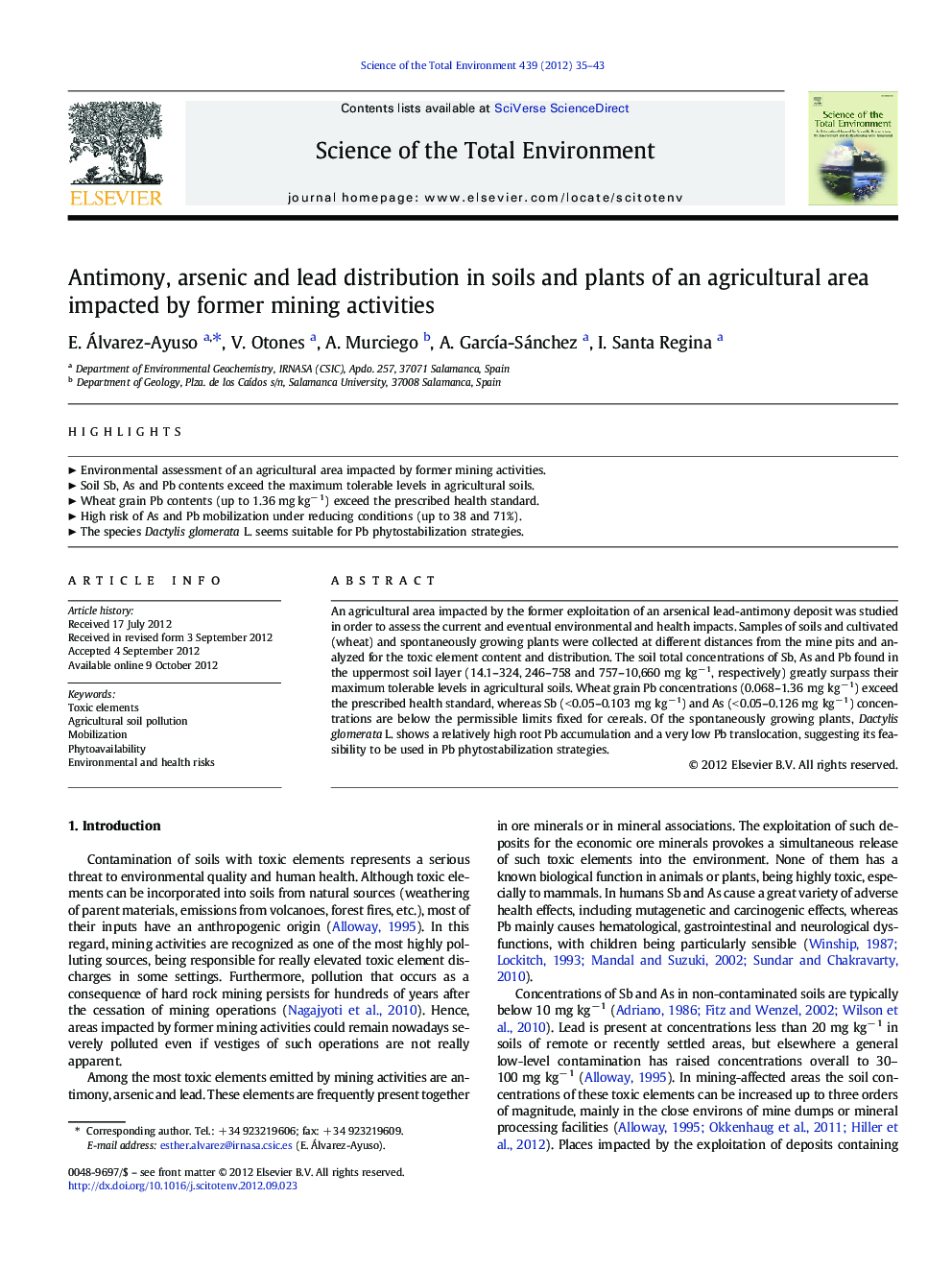| Article ID | Journal | Published Year | Pages | File Type |
|---|---|---|---|---|
| 4429183 | Science of The Total Environment | 2012 | 9 Pages |
An agricultural area impacted by the former exploitation of an arsenical lead-antimony deposit was studied in order to assess the current and eventual environmental and health impacts. Samples of soils and cultivated (wheat) and spontaneously growing plants were collected at different distances from the mine pits and analyzed for the toxic element content and distribution. The soil total concentrations of Sb, As and Pb found in the uppermost soil layer (14.1–324, 246–758 and 757–10,660 mg kg− 1, respectively) greatly surpass their maximum tolerable levels in agricultural soils. Wheat grain Pb concentrations (0.068–1.36 mg kg− 1) exceed the prescribed health standard, whereas Sb (< 0.05–0.103 mg kg− 1) and As (< 0.05–0.126 mg kg− 1) concentrations are below the permissible limits fixed for cereals. Of the spontaneously growing plants, Dactylis glomerata L. shows a relatively high root Pb accumulation and a very low Pb translocation, suggesting its feasibility to be used in Pb phytostabilization strategies.
► Environmental assessment of an agricultural area impacted by former mining activities. ► Soil Sb, As and Pb contents exceed the maximum tolerable levels in agricultural soils. ► Wheat grain Pb contents (up to 1.36 mg kg− 1) exceed the prescribed health standard. ► High risk of As and Pb mobilization under reducing conditions (up to 38 and 71%). ► The species Dactylis glomerata L. seems suitable for Pb phytostabilization strategies.
